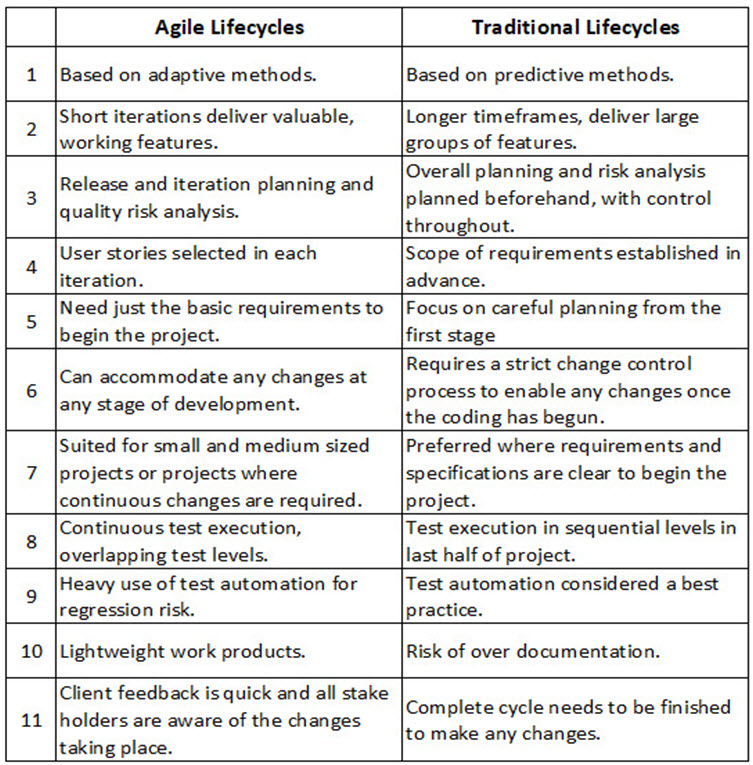ISTQB Agile Tester Extension Exam Theory Study Material Part 6
Have a deep study of this entire question bank containing theory portion with detailed explanation. This study resource is as per the latest syllabus.
Just 1 hr. of time spent in brushing up your knowledge just before the ISTQB Agile Tester Extension Exam shall be of great help in clearing it.
Set of 10 Questions (Q. 51 to 60) with detailed explanation
Q. 51: What is the role of testers in Iteration planning?
Testers make a valuable contribution in the following activities:
1) Participating in the detailed risk analysis of user stories
2) Determining the testability of the user stories
3) Creating acceptance tests for the user stories
4) Breaking down user stories into tasks (especially testing tasks)
5) Estimating testing effort for all testing tasks
6) Identifying functional and non-functional aspects of the system to be tested
7) Supporting and participating in test automation at multiple levels of testing
<<<<<< =================== >>>>>>
Q. 52: What are the testing related issues addressed during Release and iteration planning for development activities?
1) The scope of testing: Extent of testing for those areas in scope, the test goals, and the reasons for these decisions.
2) Testing team: Team members who will carry out the test activities.
3) Test environment & Test Data: Test environment and test data required, when they are needed, and whether any additions or changes to the test environment or to the data will take place before or during the project.
4) Functional and non-functional test activities: Timing, sequencing, dependencies, and prerequisites for these activities.
5) Risks: The project and quality risks to be addressed
<<<<<< =================== >>>>>>
Q. 53: What are the traditional testing principles?
1) Testing shows the presence of defects
2) Exhaustive testing is impossible
3) Early testing
4) Defect clustering
5) Pesticide Paradox
6) Testing is context dependent
7) Absence-of-errors fallacy
<<<<<< =================== >>>>>>
Q. 54: What is the difference between Traditional Testing lifecycles and Agile lifecycles?
# One of the main differences between traditional lifecycles and Agile lifecycles is the concept of very short iterations. Every iteration produces working software which delivers features of value to business stakeholders.
# All these iterations are highly dynamic. Development, integration, and testing activities take place throughout each iteration, and with considerable parallelism and overlap.
# Testing activities take place throughout the iteration and is not a final activity.
# Broad comparison between agile models and traditional models is given below.

<<<<<< =================== >>>>>>
Q. 55: What are activities involved in agile development project?
1) Project starts with release planning.
2) Planning of iterations.
3) Sequence of iterations.
4) Establishment of scope of each iteration.
5) Development of selected user stories.
6) Integration of user stories with the system.
7) Testing of user stories.
<<<<<< =================== >>>>>>
Q. 56: How do we select the right approach out of Traditional SDLC or Agile?
Selection of the right approach for the successful implementation and completion of a software project depends upon;
1) Clarity of requirements
2) Project size
3) Risk
4) Complexity
5) Customer availability
6) Team location
<<<<<< =================== >>>>>>
Q. 57: What are the similarities of functions of testing teams in Agile and traditional projects?
# Agile projects have great similarity with traditional lifecycles as far as testing is concerned.
# Testers, developers, and business stakeholders all play important role in testing in agile projects.
# Developer develops features from the user stories and does unit tests.
# Testers then tests these features.
# Business stakeholders also test the stories during implementation.
# Business stakeholders use written test cases, and they just try out the developed features and provide quick feedback to the development team.
<<<<<< =================== >>>>>>
Q. 58: What is a hardening or stabilization sprint?
# Hardening sprint or stabilization sprint is an additional sprint which is run by the agile teams at the end of the regular sprints.
# Hardening sprint generally focuses on final integration before the release, teams use them for building functionality based on the product backlog.
# Hardening sprint helps in fixing the loose ends found during earlier sprints, like data issues or defects related to external interfaces and any other forms of technical debt.
<<<<<< =================== >>>>>>
Q. 59: Why do agile teams use a hardening sprint?
# Requirement of a hardening sprint is felt by the teams when they approach near the release.
# When the team finds some integration issues pending with previous sprints, or testing could not be done using some of the relevant data, the team is compelled to introduce an additional hardening sprint.
# Generally stakeholders also agree on permitting more time and effort to accommodate additional hardening sprint.
# Sometimes a hardening sprint is planned beforehand itself and the lead time and infrastructure etc. is planned in advance.
<<<<<< =================== >>>>>>
Q. 60: Is it good to have a hardening sprint?
# Introduction of hardening sprints is not a good practice.
# Sudden introduction of hardening sprint or a planned buffer sprint is not in line with Agile principles of time-boxed development for creating a shippable product.
# Teams generally complain that by the practice of introducing hardening sprints, total work to be done in the iteration remains unknown and it becomes difficult to estimate the time of completion of the remaining features.
# As per the best practice no feature is considered done until it has been integrated and tested with the system.
# Another good practice is to address defects remaining from the previous iteration at the beginning of the next iteration, as part of the backlog for that iteration (referred to as “fix bugs first”).
ISTQB Agile Tester Extension Exam Theory Study Material Part 7

An expert on R&D, Online Training and Publishing. He is M.Tech. (Honours) and is a part of the STG team since inception.
